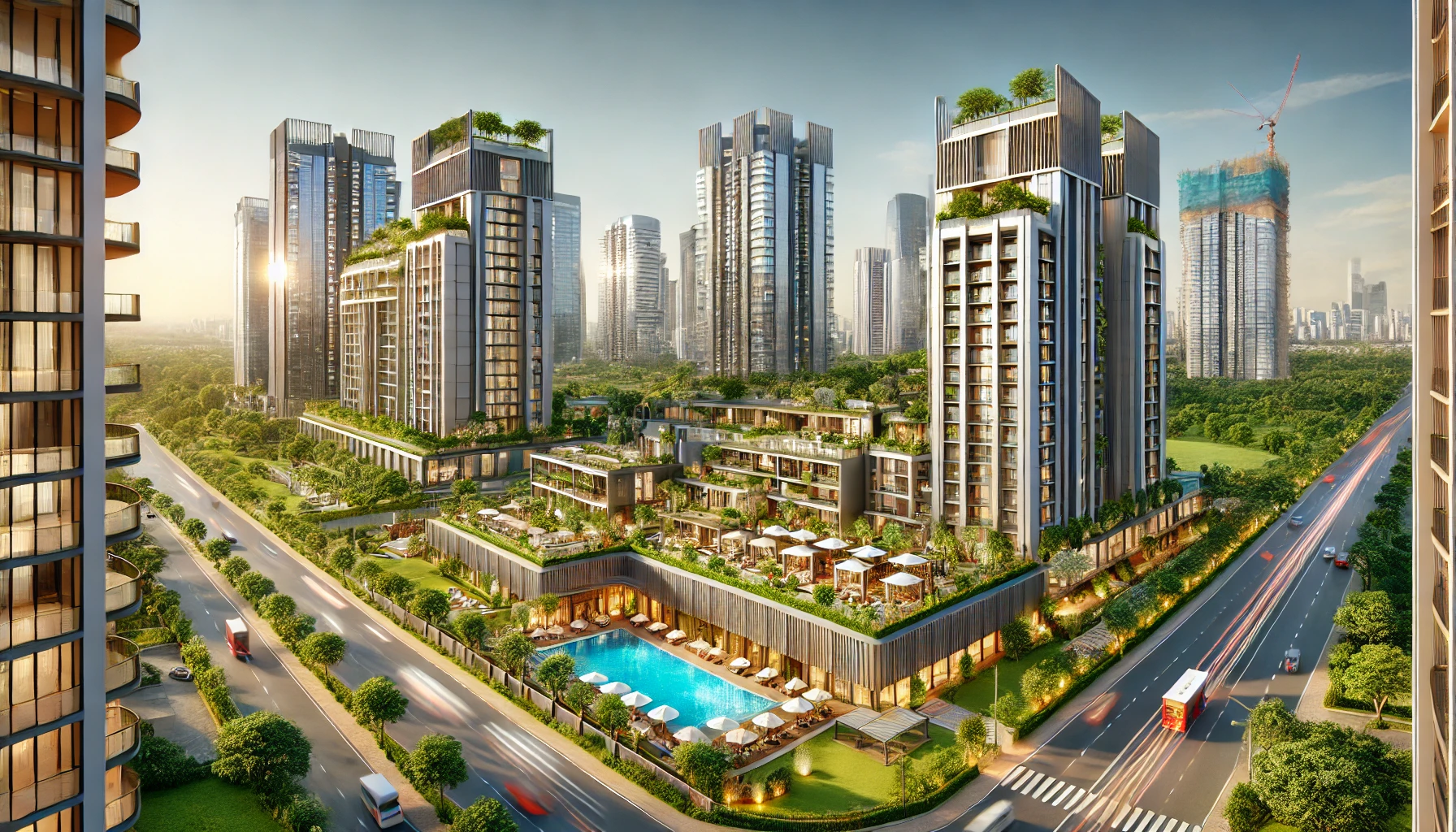The term real estate building encompasses a wide range of structures, from residential homes to commercial skyscrapers. In today's fast-paced world, real estate building is not only about constructing a place to live or work; it also represents a significant investment opportunity. Whether you’re a developer, an investor, or a homebuyer, understanding the various facets of real estate building is crucial to making informed decisions.
The Evolution of Real Estate Building
Real estate development has evolved dramatically over the years. Once characterized by basic structures meant to serve a functional purpose, modern real estate buildings now focus on sustainability, aesthetic appeal, and cutting-edge technology. Today’s buildings incorporate innovative design elements, smart home systems, and eco-friendly materials, ensuring that they meet the growing demand for energy efficiency and a lower carbon footprint.
Types of Real Estate Buildings
There are several key categories within real estate building:
-
Residential Buildings: These include single-family homes, apartment complexes, condominiums, and townhouses. Residential buildings can vary in style, size, and amenities, catering to a wide range of homeowners and renters.
-
Commercial Buildings: This category includes office buildings, shopping malls, and business complexes. Commercial real estate buildings are often designed with functionality and efficiency in mind, incorporating spaces for retail stores, offices, restaurants, and more.
-
Industrial Buildings: Real estate buildings for industrial use include warehouses, factories, and distribution centers. These structures prioritize space and utility to accommodate manufacturing processes, storage, and logistics.
-
Mixed-Use Developments: These projects combine residential, commercial, and sometimes industrial spaces within a single complex. Mixed-use buildings are increasingly popular in urban areas where developers aim to create integrated communities that provide all amenities within close proximity.
Key Considerations in Real Estate Building
-
Location: Location is often the most critical factor in real estate. Buildings in prime locations tend to have higher demand, whether for residential living, office space, or retail outlets. Proximity to public transportation, schools, business districts, and recreational facilities adds significant value.
-
Design and Architecture: The design of a building plays a crucial role in its appeal. For residential real estate, modern architecture that maximizes space and light is in high demand. For commercial buildings, designs that enhance productivity and client experience are prioritized. In both cases, aesthetics and functionality go hand in hand.
-
Sustainability: Eco-friendly construction is becoming increasingly important in the real estate sector. Builders now incorporate energy-efficient technologies, such as solar panels, green roofs, and water recycling systems, into new projects. This not only reduces environmental impact but also cuts down on energy costs for tenants and property owners.
-
Building Materials: The choice of building materials affects both the durability and sustainability of a real estate project. Modern construction often uses steel, concrete, and glass, combined with sustainable materials like bamboo and recycled composites to reduce environmental impact while maintaining structural integrity.
-
Technological Integration: Smart technology is a growing trend in real estate building. From smart home systems that allow residents to control lighting, temperature, and security remotely to office buildings with integrated data and energy management systems, technology is reshaping how we interact with the spaces we occupy.
Investment in Real Estate Buildings
Real estate buildings offer a lucrative investment opportunity, whether for short-term gains or long-term returns. Here are the main investment strategies:
-
Buy and Hold: Investors purchase real estate buildings, such as residential or commercial properties, and hold onto them for rental income and long-term appreciation. This strategy requires careful consideration of the property's location and potential for future value growth.
-
Flipping: This involves buying undervalued buildings, renovating them, and selling them for a profit. It’s a popular strategy in both residential and commercial markets but requires knowledge of market trends and construction costs.
-
Real Estate Investment Trusts (REITs): For those who prefer not to invest directly in physical properties, REITs offer a way to invest in real estate buildings. These trusts pool investor money to purchase and manage large portfolios of properties, providing dividends to investors based on the trust’s income.
The Future of Real Estate Building
The future of real estate building will be shaped by sustainability, technological advancements, and urbanization. Smart cities, green buildings, and sustainable infrastructure will drive innovation in the industry. As populations grow, especially in urban areas, there will be a rising demand for vertical building solutions like skyscrapers and multi-functional complexes that combine residential, commercial, and recreational spaces.
Conclusion
Real estate building is a dynamic and multi-faceted industry that plays a significant role in shaping modern cities and communities. Whether you are an investor, developer, or homebuyer, understanding the trends, materials, and technologies driving today’s construction can help you make informed decisions. As the industry continues to evolve, real estate buildings will remain a cornerstone of economic growth, sustainability, and innovation.
To buy RERA Certified & DTCP Approved Gated Community Villa Open Plots in Andhra Pradesh & Telangana please contact:
For Sales : 8179712384
Mail : sales@openplots.net
